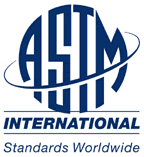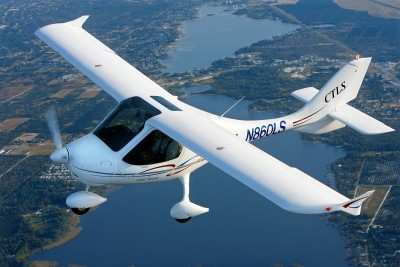Fri, Oct 28, 2011
Light Sport Manufacturers Must Comply With New Standards By
November 12
On July 29, 2011, the FAA announced in the Federal Register the
availability of ASTM International standard F2746–09,
Specification for Pilot’s Operating Handbook (POH) for Light
Sport Airplane, as well as ASTM F2245-10c, Specification for Design
and Performance of a Light Sport Airplane. Manufacturers of fixed
wing light sport aircraft are required to revise their POHs for new
production airplanes in accordance with these new standards by no
later than Nov.12, 2011.

ASTM F2245 and ASTM F2746 are under the
jurisdiction of Subcommittee F37.20 on Airplane, part of ASTM
International Committee F37 on Light Sport Aircraft. F37.20
currently maintains six published standards related to
airplanes.
One of the changes in ASTM F2245-10c is the requirement to use
either ASTM F2746-09 or the format and content requirements of
General Aviation Manufacturers Association (GAMA) Spec 1 for POHs
supplied with light sport aircraft. A key enhancement introduced by
this change is the reorganization of LSA POH content to align with
that found in larger general aviation aircraft. This enhances
safety because pilots transitioning to larger aircraft from LSA or
from larger aircraft to LSA will be presented with a POH that has
an identical organization. Other enhancements include better
transfer of needed information for non-OEM aircraft equipment such
as avionics and engines, clarified change control requirements,
more accurate airspeeds and more detailed content throughout.

A previous revision to the ASTM F2245
standard also included a new section addressing airspeed indicator
markings. While not required to upgrade their previously produced
aircraft to the new POH requirements, LSA manufacturers are
encouraged to review the previously revised airspeed indicator
marking and new POH requirements with regard to their previously
produced aircraft. If necessary, manufacturers are encouraged to
provide customers of those aircraft with updates to ensure that
they have accurate determination of airspeed data and adequate
presentation of that data in their POHs and airspeed
indicators.
The accepted changes in these standards are part of an ongoing
effort by ASTM Committee F37 to enhance the content of the
standards based on feedback from industry, FAA, the National
Transportation Safety Board and other worldwide civil aviation
authorities.
“The changes in these standards, along with forthcoming ones,
are demonstrating the ability of the consensus standards process to
rapidly respond to the needs of the light sport aircraft industry,
reducing the time for safety enhancements to reach consumers on new
production aircraft,” says Adam Morrison, Streamline Designs
LLC, F37.20 chairman and vice chairman of F37.
More News
Circle To Runway (Runway Number) Used by ATC to inform the pilot that he/she must circle to land because the runway in use is other than the runway aligned with the instrument appr>[...]
Aero Linx: National Aviation Safety Foundation (NASF) The National Aviation Safety Foundation is a support group whose objective is to enhance aviation safety through educational p>[...]
At Altitude Of About 250-300 Ft Agl, The Airplane Experienced A Total Loss Of Engine Power On November 6, 2024, at 1600 central standard time, a De Havilland DHC-1, N420TD, was inv>[...]
From 2009 (YouTube Edition): Three Hour Flight Was 'Flawless' -- At Least, Until Mother Nature Intervened For anyone who loves the aviation business, this was a VERY good day. Afte>[...]
Also: AMA Names Tyler Dobbs, More Falcon 9 Ops, Firefly Launch Unsuccessful, Autonomous F-16s The Air Force has begun ground testing a future uncrewed jet design in a milestone tow>[...]
 ANN's Daily Aero-Term (05.05.25): Circle To Runway (Runway Number)
ANN's Daily Aero-Term (05.05.25): Circle To Runway (Runway Number) ANN's Daily Aero-Linx (05.05.25)
ANN's Daily Aero-Linx (05.05.25) NTSB Prelim: De Havilland DHC-1
NTSB Prelim: De Havilland DHC-1 Classic Aero-TV: The Boeing Dreamliner -- Historic First Flight Coverage
Classic Aero-TV: The Boeing Dreamliner -- Historic First Flight Coverage Airborne-NextGen 05.06.25: AF Uncrewed Fighters, Drones v Planes, Joby Crew Test
Airborne-NextGen 05.06.25: AF Uncrewed Fighters, Drones v Planes, Joby Crew Test




